HOME • BLOGS
Our Blogs: Where Science Meets Soul
This isn’t just another blog roll—it’s a living archive of bold ideas, biotech breakthroughs, and the human stories behind the science.
Africa Market Entry for Biopharma: A Field-Tested Playbook for CEOs
- Reading Time: 6 minutes
- Ndeye Makalou, Pharm D. MSc.
Africa is emerging as a decisive frontier for biotech and pharma—now home to 1.4 billion people, with urbanization and digital adoption outpacing global averages. The continent’s pharmaceutical market is projected to reach $37B by 2033, marking growth rates of 3–8% annually, while regulatory harmonization (e.g., African Medicines Agency) and public-private partnerships are helping strip away traditional complexity. With strategic execution and credible partners, entering Africa can deliver risk-adjusted returns and sustainable advantage
Dismantle the “One Africa” Myth
Africa comprises 54 distinct markets, thousands of languages, and divergent regulatory and payer structures. Winners treat Africa as a portfolio—zooming out to size up regional opportunity, zooming in to define country-specific strategies, with each market validated against hard data and local intel.
Use a Data-Driven Selection Model (TIGERS)
Apply a repeatable scoring framework:
- Target Market Size: Projected TAM by country segment (e.g., Nigeria $5.3B, South Africa $10.7B in 2030).
- Infrastructure: Map logistics reliability and digital rails.
- Government Stability/Regulation: Use agency timelines—AMA can reduce regulatory time by up to 50%.
- Economic Environment: GDP growth, healthcare spending rates.
- Regional Integration: Free trade blocks, pooled procurement mechanisms.
- Strategic Fit: Specialist drug demand, local partnership access.
Validate through a weighted decision matrix; back all decisions with cited market reports and third-party industry benchmarks.
Entry Models with Executive-Level Risk/Reward
Select fit-for-purpose market and risk exposure:
- Direct Investment: Greenfield, M&A, or JV; cite benchmarks (average payback periods, opex/capex costs are 20–60% higher than Asia).
- Partnership-Led Expansion: Alliances, licensing, franchising; highlight success rates and recent local partnership wins.
- Digital-First Entry: E-commerce, mobile education pilots—recent pilots show 15–25% HCP activation in year one.
Localize for True Product-Market Fit
- Product & Pricing: Reference GDP purchasing parity, local pack trends; e.g., “small pack sizes doubled Adherence for diabetes Rx in Kenya”.[4][2]
- Culture & Customer: Show market-tested branding and medical education approaches.
- Regulatory & Compliance: Map average approval times and local labeling requirements, backed by citations.[3][1]
De-risk Operations and Financials with Real-World Proof
- Logistics: “Multi-modal logistics with mobile-enabled Last Mile reduced fulfillment costs by 18% in Ghana pilot”.
- Inventory: Quantify buffer stock requirements and local supplier sourcing impact.
- Tech Enablement: KPIs for digitized supply chain monitoring.
- Finance: Present real FX volatility ranges, typical bank relationships, and DFI funding benchmarks.
Stand Up a Robust Risk Program
- Live risk programs must model political, operational, and compliance scenarios; cite premium costs for specialized insurance and sources on local risk frameworks.
- Highlight mitigation outcomes from recent crises (e.g., “Ebola contingency plans reduced downtime by 40% for JV partners in Nigeria”).
Scale and Institutionalize Success
- KPIs: Include classic P&L and pilot metrics—access, affordability, adherence tracked quarterly.[5][4]
- Show how successful beachheads led to X% market expansion via regional blocks and cloud-ready service platforms, citing actual client or peer performance.
What Biopharma Leaders Must Get Right
- Regulatory Route: Map national agency requirements, time-to-market data, and cite expert RA/QA partner outcomes.
- Market Access: Give payer breakdowns, refer to effective HEOR narratives and reimbursement dossiers.
- Stakeholder Engagement: Show case studies of successful ministry, KOL, and patient organization partnerships, including key advocacy wins.
- Governance: Use alliance scorecards and decision trees, with case examples.
A 90-Day Board-Ready Action Plan
- Shortlist Markets (Weeks 1–3): TIGERS scoring against up-to-date country benchmarks, select alpha market.
- Design Entry (Weeks 4–6): Entry model financials, regulatory roadmap, capex/opex projections.
- Partnership Stack (Weeks 5–8): Secure distribution, compliance, and medical alliances with documented governance.
- Operational Pilot (Weeks 7–12): Controlled pilots with hard KPIs—adoption rates, HCP activation, supply chain metrics.
Why GIBC Delivers Results
GlobalImpact Bio Consulting (GIBC) blends in-country experience (recent partnerships with 20+ African health ministries) and deep regulatory/commercial expertise. Our founder, Dr. Ndeye Makalou, drove Roche’s Sub-Saharan growth, delivering double-digit revenue and seamless IND-to-Phase 3 execution globally.
Ready to Move? Two Next Steps
- Take the Market Readiness Self-Assessment: Benchmark across six critical domains, receive instant scoring and tailored board briefing materials.[2]
- Book an Africa Market Entry Sprint: Four weeks to deliver a validated short list, entry model, regulatory roadmap, and pilot KPIs for board sign-off.
Africa is rewarding disciplined teams—those that blend hard data, credible partners, and adaptive execution. With a rigorously validated framework, CEOs can move faster, mitigate risk, and build durable advantage in the continent’s fast-evolving healthcare market

Dive Into More Stories
Are You Ready For Your Next Stage of Growth?
Schedule your strategy session today and discover how GIBC can help you:
global markets
operations
and innovation
global markets
operations
and innovation


